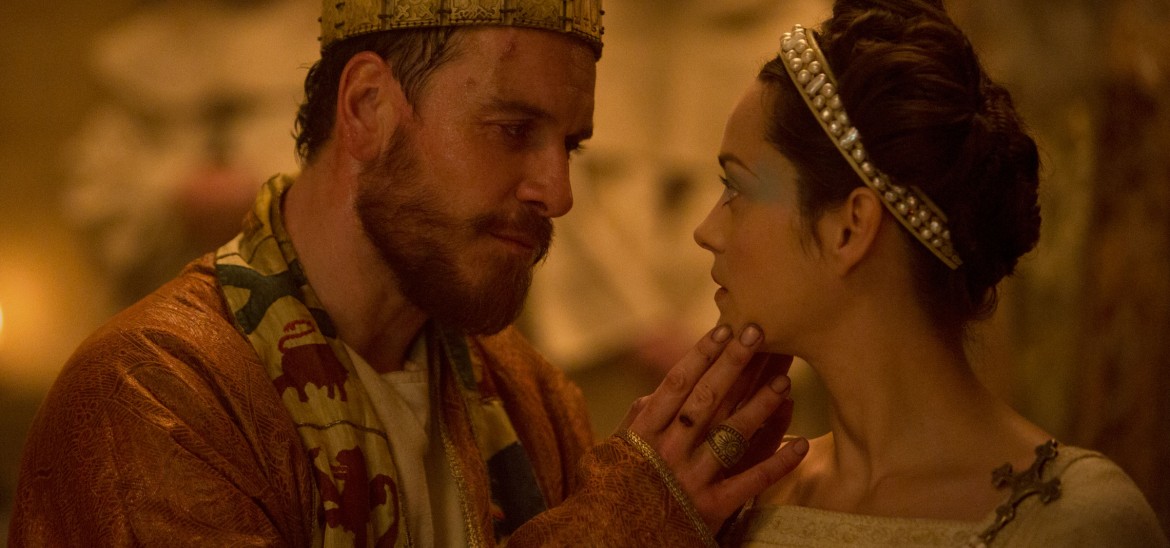Into Film Clubs
Find out everything you need to know about starting an Into Film Club.



Macbeth is the compelling, bloodthirsty new dramatisation of Shakespeare's tragedy, directed by Australian filmmaker Justin Kurzel and starring some of the most distinctive actors in modern cinema.
The story of a thane who receives a prophecy from a trio of witches that he will one day become King of Scotland, before becoming consumed by murderous ambition, is one of Shakespeare's darkest and most mesmerising plays. This atmospheric version is a worthy addition to the Shakespearean cinematic canon, providing fresh illumination on the text and themes, through visual language as much as soliloquies.
All hail Macbeth…
Like many Shakespeare plays, Macbeth has appeared on screen several times before. In 1971, director Roman Polanski's version focused heavily on the violent aspects of the text in ways that often resembled a horror film. But like many auteur films, it contains as many of the visual flourishes of its director as it does links to the original text. A young Ian McKellen also took on the title role alongside Judi Dench in 1979 in a very stripped down, theatrical version that interrogates the text much more vigorously.
Our favourite screen Macbeth might be iconic Japanese director Akira Kurosawa's 1957 film Throne of Blood, set in the world of the samurai warrior, which is often seen as the film version which most gets to grips with the themes of the original play, even as it takes massive liberties with the actual dialogue.
This 2015 version is more traditional in many ways, choosing to set the film in the same time and location as Shakespeare - Medieval Scotland, seemingly around the 11th century.
Adapting a Shakespeare play can be daunting for filmmakers. It can be difficult to find fresh things to say about a text or explore angles that haven't been done before, resulting in a number of faithful, but rather unimaginative adaptations.
However this version confidently dispenses with this from the very beginning. The film opens with Macbeth and Lady Macbeth burying their infant child and becoming plunged into unimaginable grief. This sequence does not feature in the play and provides the characters with a context and motivation not previously explored, lending the text a richer complexity in addition to the themes of ambition and power. As well as this, the opening scenes also explore Macbeth's past in greater detail, emphasising how he has recently returned from war and suggesting he may well be suffering from Post Traumatic Stress Disorder.
"The Scottish Film"
Having studied the play himself at school, one of Justin's first jobs was as a theatre set designer on a production of Macbeth. It is well known that theatrical productions do not traditionally refer to the title by name, believing that mentioning directly will cause disaster, so it is spoken of as "The Scottish play" instead. The filmmakers had ignored such superstitions, until, as our reporter found out, a series of disasters on set caused panic and new versions of the script were hastily produced with the title of "The Scottish film" instead!
There were a series of more serious challenges facing the filmmakers however. Filming took place on location around England and Scotland, particularly the Isle of Skye in a series of beautiful landscapes. But it was crucial for the film's tone that the land was also extremely harsh and brutal, which extended to the weather conditions the film was made in. At times, things were so rough that crew members were blown off the ground, together with their camera equipment. Their effort was worth it though, the finished film contains a number of spectacular sweeping shots that really suggest the camera is being blown around by the forces of nature, adding to the slightly unhinged feel to the film and its character's motivations.
The other notable element in how the film looks is its distinctive use of mist. The challenges of achieving this look consistently meant that this was actually created by a visual effects team. They set up smoke stations on different parts of the set that seeded smoke through fans and inflatable tubes of up to 500 metres long. As filmmakers are never able to accurately control the weather, the memorable appearance of other elements, particularly fire and rain were also created manually using dedicated machines. In addition to the weather, a number of gory amputated limbs, blood, and even severed heads were created for use on the battlefield in some of the film's most brutal scenes. This is a welcome throwback to using manual craftsmanship to create arresting images and props, rather than simply relying on digital effects to be able to create everything, adding to the intensity and earthiness of a film like Macbeth in particular.
Macbeth: The Game?
The filmmakers clearly enjoyed working together. Justin Kurzel has already re-teamed with stars Michael Fassbender and Marion Cottilard, together with screenwriter Michael Lesslie and director of photography Adam Arkapaw on an adaptation of computer game Assassin's Creed. We would also expect to hear a musical score from Justin's brother Jed, whose loud, brooding soundtrack for Macbeth is one of its most memorable features. Cinema does not always have the best track record when it comes to adapting computer games for the screen, but if the result is anything like as visceral and powerful as their Macbeth, then we should expect one of the greatest computer game adaptations of all time!
Discover more Shakespeare film titles with our Into Film Recommends podcast below, or login to SoundCloud to download the podcast and listen on the go.
The Into Film Recommends Podcast Series is also available on iTunes.

Find out more about our streaming service, designed specifically for UK schools.